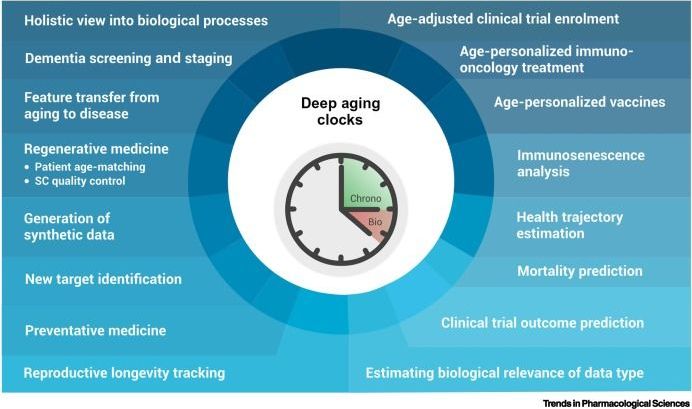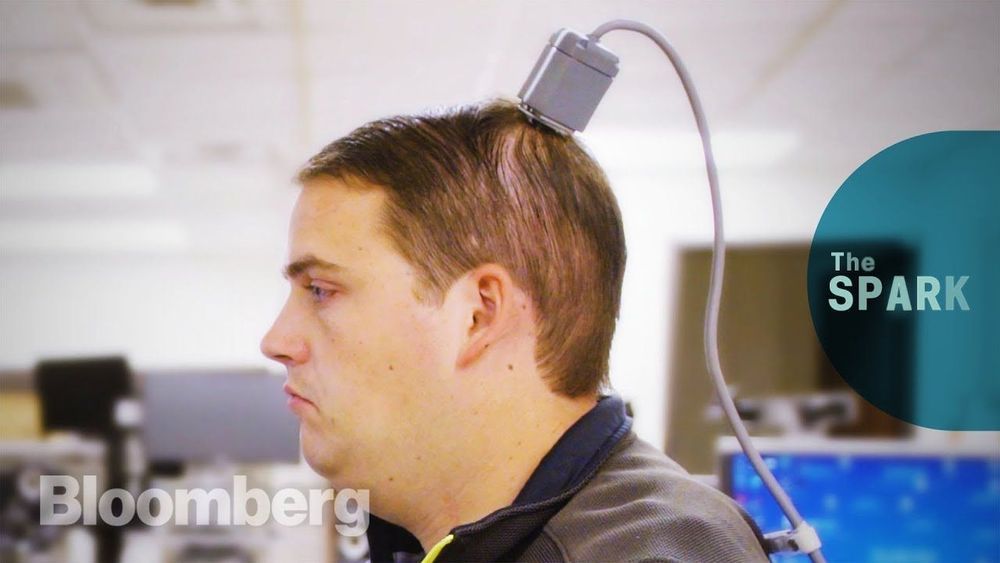Sleep is essential to all animals with a nervous system. Nevertheless, the core cellular function of sleep is unknown, and there is no conserved molecular marker to define sleep across phylogeny. Time-lapse imaging of chromosomal markers in single cells of live zebrafish revealed that sleep increases chromosome dynamics in individual neurons but not in two other cell types. Manipulation of sleep, chromosome dynamics, neuronal activity, and DNA double-strand breaks (DSBs) showed that chromosome dynamics are low and the number of DSBs accumulates during wakefulness. In turn, sleep increases chromosome dynamics, which are necessary to reduce the amount of DSBs. These results establish chromosome dynamics as a potential marker to define single sleeping cells, and propose that the restorative function of sleep is nuclear maintenance.
First published in 2016, predictors of chronological and biological age developed using deep learning (DL) are rapidly gaining popularity in the aging research community.
These deep aging clocks can be used in a broad range of applications in the pharmaceutical industry, spanning target identification, drug discovery, data economics, and synthetic patient data generation. We provide here a brief overview of recent advances in this important subset, or perhaps superset, of aging clocks that have been developed using artificial intelligence (AI).
This week:
🚀 A milestone for NASA’s Orion Spacecraft 🌑 A commercial lunar payload update 👩🏾🏫 More honors for a historic icon.
These are a few of the stories to tell you about on the latest episode of This Week at NASA:
It sounds like science fiction: a device that can reconnect a paralyzed person’s brain to his or her body. But that’s exactly what the experimental NeuroLife system does. Developed by Battelle and Ohio State University, NeuroLife uses a brain implant, an algorithm and an electrode sleeve to give paralysis patients back control of their limbs. For Ian Burkhart, NeuroLife’s first test subject, the implications could be life-changing.
Featured in this episode:
Batelle:
https://www.battelle.org/
Ohio State University
Commentary: Private investors are excited about renewable sources like solar and wind, but they need to focus on energy storage going forward.
These robotic tiles can track your every step to create an immersive VR experience via 筑波大学|University of Tsukuba.
At first, the scientists wondered whether it was a mistake.
Just 21 days after leaving the Norwegian island of Spitsbergen, an arctic fox had arrived in Greenland. And in less than three months, it made it to Canada. The fox averaged nearly 30 miles a day (50 kilometers) — some days, though, it walked almost 100 (160 kilometers).
“When it started happening, we thought ‘is this really true?’” said Arnaud Tarroux, one of the researchers who tracked the female fox. Was there “an error in the data?”
Jason Shulman photographs entire movies with ultra-long exposures, creating impressionist photo masterpieces in the process.
Main image: The Wizard of Oz (1939)Photograph: Jason Shulman courtesy the artist and Cob Gallery.
If we loved the deep sea as much as deep space, we might not have so many environmental problems.
Millions of solar panels clustered together to form an island could convert carbon dioxide in seawater into methanol, which can fuel airplanes and trucks, according to new research from Norway and Switzerland and published in the Proceedings of the National Academy of Sciences journal, PNAS, as NBC News reported. The floating islands could drastically reduce greenhouse gas emissions and dependence on fossil fuels.









